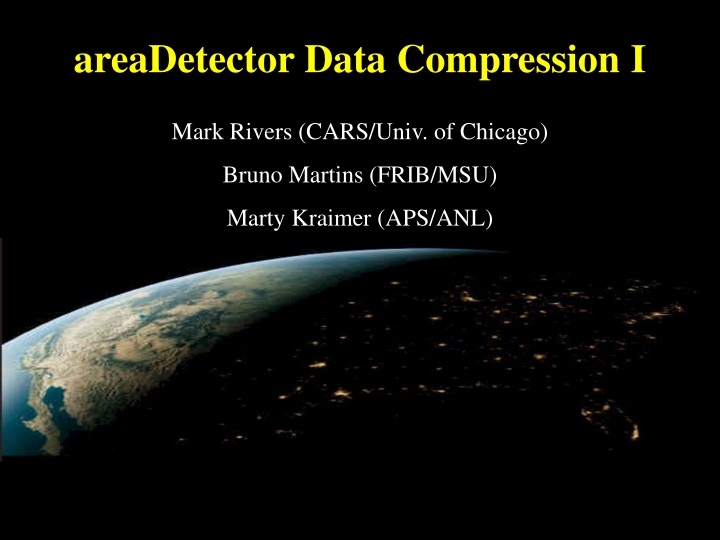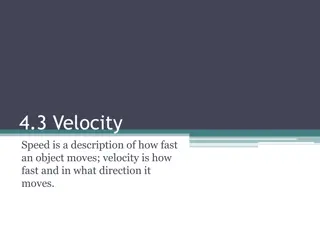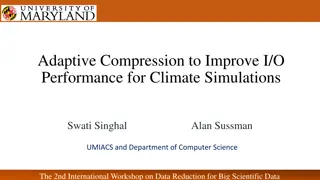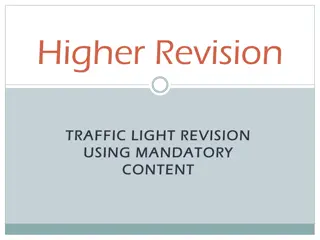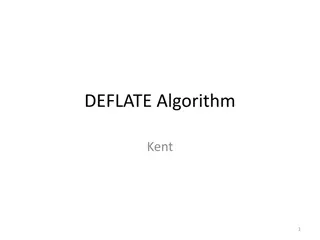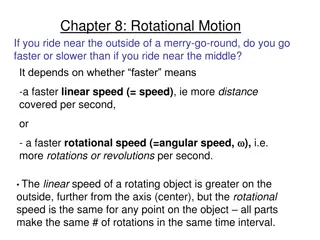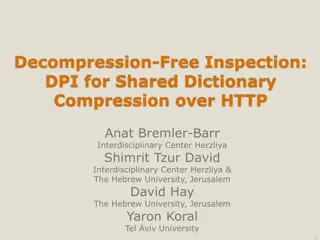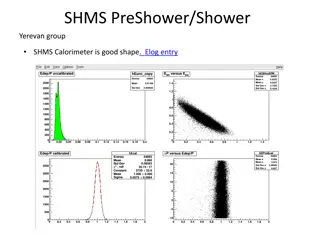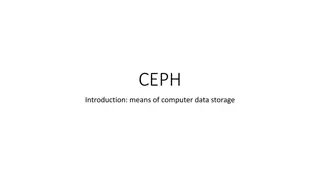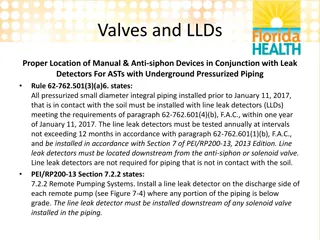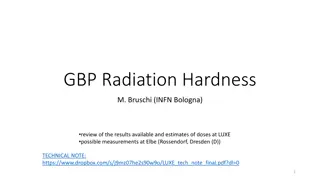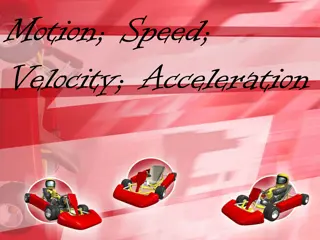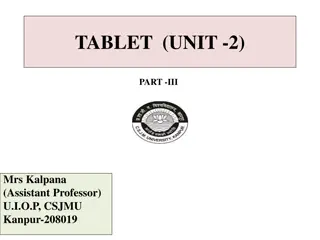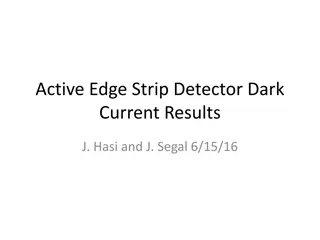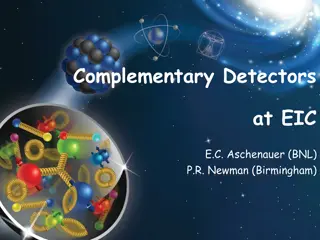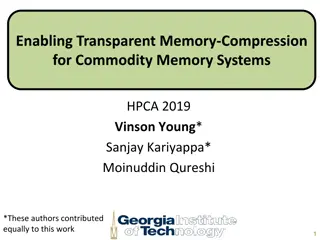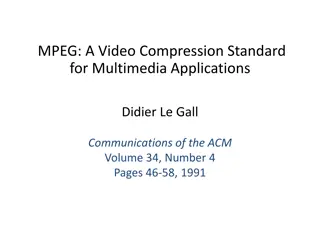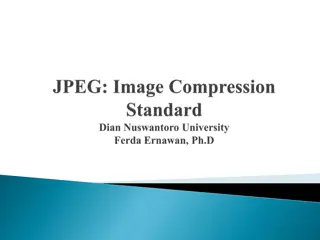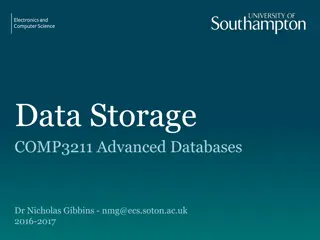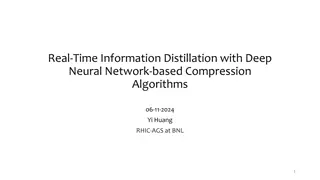Data Compression for High-Speed Detectors: Addressing Storage Challenges
Data compression solutions are crucial for managing the massive data outputs of modern high-speed detectors like Eiger, Pilatus, and Lambda. The need for efficient compression is evident as detectors outpace disk system capabilities and network speeds. This necessitates rapid and easy-to-use compression methods to mitigate storage challenges and facilitate data processing at maximum speeds. Support for compressed NDArrays and NTNDArrays, along with the introduction of the NDPluginCodec, offers a comprehensive approach to compression and decompression. Explore the benefits of utilizing different codecs like JPEG, Blosc, LZ4, and BSLZ4, each offering unique compression performance and speed options.
Uploaded on Mar 10, 2025 | 0 Views
Download Presentation

Please find below an Image/Link to download the presentation.
The content on the website is provided AS IS for your information and personal use only. It may not be sold, licensed, or shared on other websites without obtaining consent from the author.If you encounter any issues during the download, it is possible that the publisher has removed the file from their server.
You are allowed to download the files provided on this website for personal or commercial use, subject to the condition that they are used lawfully. All files are the property of their respective owners.
The content on the website is provided AS IS for your information and personal use only. It may not be sold, licensed, or shared on other websites without obtaining consent from the author.
E N D
Presentation Transcript
areaDetector Data Compression I Mark Rivers (CARS/Univ. of Chicago) Bruno Martins (FRIB/MSU) Marty Kraimer (APS/ANL)
Data Compression Motivation We are already in the era of big data with existing detectors. Eiger, Pilatus, Lambda, PCO, FLIR/Point Grey, Xspress 3, etc. Can all produce data faster than most disk systems can handle All exceed 1 Gbit network capacity, and some exceed 10 Gbit. Rapidly fill up disks Will become a more serious issue with coming upgrades Increased count rates will allow existing detectors to run at their maximum speed New generations of even faster detectors will be coming Data compression can help with these issues Must be fast and easy to use
Support for Compressed NDArrays NDArray has 2 new fields to support compression .codec field (struct Codec_t) to describe the compressor typedef enum { NDCODEC_NONE, NDCODEC_JPEG, NDCODEC_BLOSC, NDCODEC_LZ4, NDCODEC_BSLZ4 } NDCodecCompressor_t; typedef struct Codec_t { std::string name; /**< Name of the codec */ int level; /**< Compression level. */ int shuffle; /**< Shuffle type. */ int compressor; /**< Compressor type */ .compressedSize (size_t) field with compressed size if codec.name is not empty.
Support for Compressed NTNDArrays pvAccess NTNDArray has always had .compressedSize and .codec fields, but never previously implemented in servers or clients NDPluginPva now converts compressed NDArrays into compressed NTNDArrays Compressed NTNDArrays received with pvAccess can be decompressed with NDPluginCodec or with other clients.
NDPluginCodec New plugin for data compression and decompression Written by Bruno Martins from FRIB Mode: Compress or Decompress Compressor: None JPEG (JPEGQuality selection) Blosc (many options, next slide) LZ4 BSLZ4 (Bitshuffle/lz4) CompFactor_RBV: Actual compression ratio CodecStatus, CodecError JPEG is lossy, all others lossless All codecs are now built in ADSupport as shareable libraries that can be called from Java or HDF5 Easy to add additional codecs
Blosc Codec Options BloscCompressor options. Each has different compression performance and speed BloscLZ LZ4 LZ4HC Snappy Zlib Zstd BloscCLevel Compression level: 0=no compression, 9=maximum compression. Increasing execution time with increasing level. BloscShuffle Choices = None, Byte, Bit. Differences in speed and compression performance. BloscNumThreads Number of threads used to compress each NDArray
Multiple Plugin Threads Blosc threads compress a single NDArray in parallel Can also using multiple threads in NDPluginCodec to compress multiple NDArrays in parallel 1 thread 3 threads Execution time 24 ms 36 arrays/s Dropping arrays Execution time 24 ms 83 arrays/s No dropped arrays
LZ4 and BSLZ4 Codecs These are the codecs used by the Eiger server from Dectris They don t use the Blosc codecs, but rather the native LZ4 and Bitshuffle/LZ4 codecs. Dectris server can optionally use these compressions for HDF5 files saved locally on their server Dectris server always uses one of these compressions for data streamed over the ZeroMQ socket interface to the ADEiger driver These can now be decoded directly in ADEiger, or passed as compressed NDArrays to NDPluginCodec and other plugins Compressed arrays can be passed directly to NDFileHDF5 to be written with newly supported direct chunk write feature. More on this later.
Codec Parameter Records Codec_RBV and CompressedSize_RBV records to asynNDArrayDriver and hence to all plugins.
ImageJ pvAccess Viewer Now supports displaying compressed NTNDArrays Supports all compressions (JPEG, Blosc, LZ4, BSLZ4) Can greatly reduce network bandwidth when the IOC and viewer are running on different machines 1 Gbps No compression Blosc compression 0 Gbps
ImageJ Decompression Implementation Native Java versions of Blosc, LZ, Bitshuffle/LZ4 decompression are not available Instead use C libraries built in ADSupport for these Java calls C via a thin Java Native Access (JNA) wrapper This same mechanism could be used to support compressed NTNDArrays in CSS/Boy or Phoebus.
ADEiger Changes Now supports Bitshuffle/LZ4 on Stream interface over ZeroMQ Previously only LZ4 was supported New StreamDecompress bo record to enable/disable decompression. If disabled: NDFileHDF5 can use Direct Chunk Write without ever decompressing NDPluginPva can send to ImageJ without ever decompressing NDPluginCodec can decompress for other plugins like NDPluginStats, etc.
